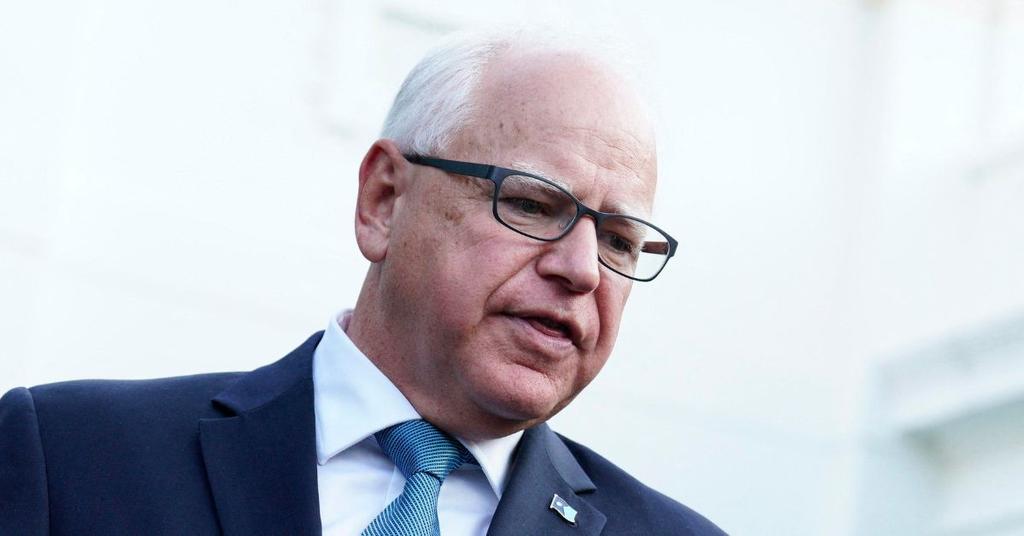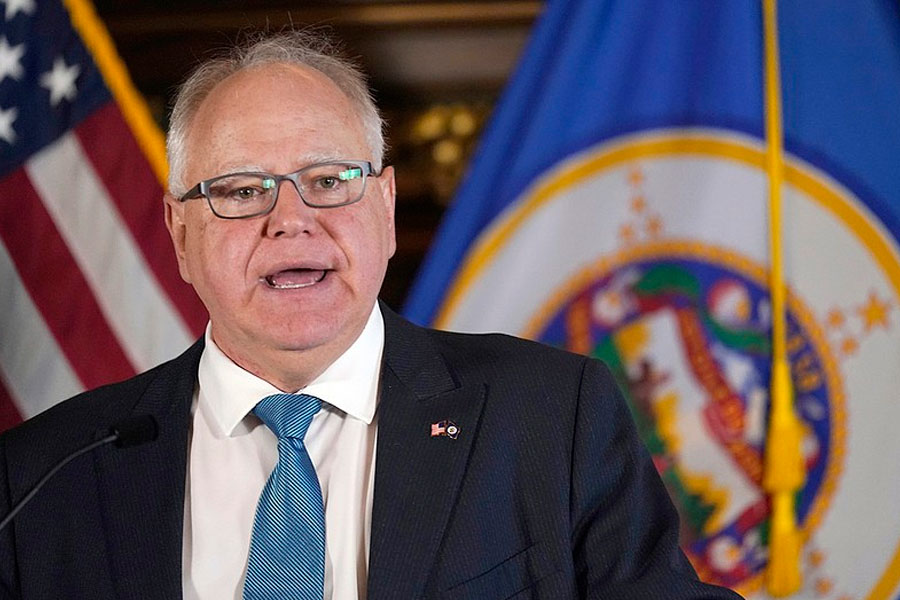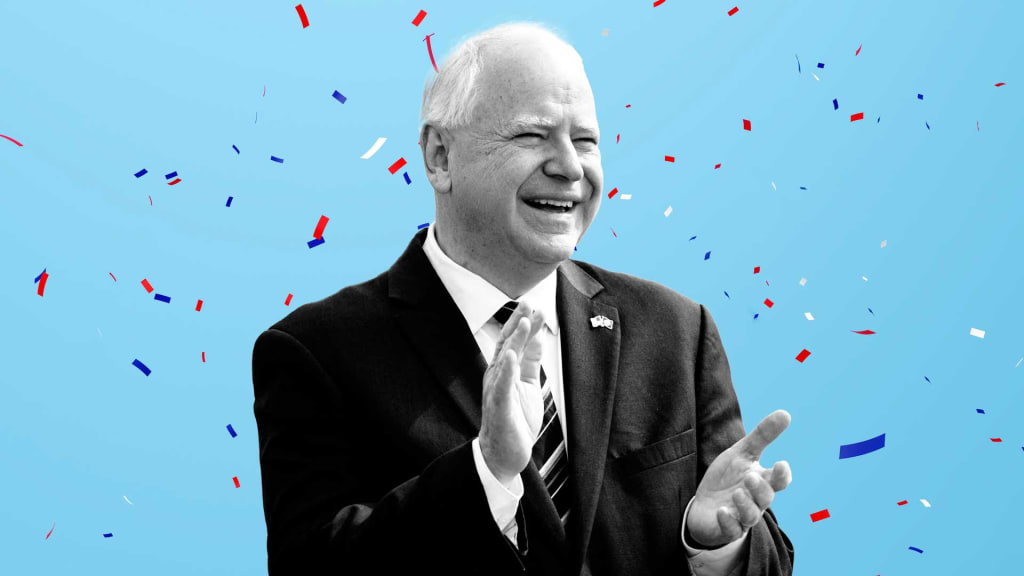Tim Walz’s Political Career

Tim Walz, the current governor of Minnesota, has navigated a path through the political landscape, leaving his mark on both the state and national stage. From his humble beginnings as a teacher and soldier to his ascent to the governor’s mansion, Walz’s journey has been one of service and unwavering commitment to his constituents.
Timeline of Political Career
Tim Walz’s political career has been marked by a steady progression, each step building upon the foundation laid by the previous one. His path began in 2006 when he was elected to represent Minnesota’s 1st congressional district in the United States House of Representatives. This marked the start of his foray into national politics, where he quickly established himself as a voice for the people of Minnesota.
- 2006: Elected to the U.S. House of Representatives, representing Minnesota’s 1st congressional district.
- 2008: Re-elected to the U.S. House of Representatives.
- 2010: Re-elected to the U.S. House of Representatives.
- 2012: Re-elected to the U.S. House of Representatives.
- 2014: Re-elected to the U.S. House of Representatives.
- 2018: Elected as the 41st Governor of Minnesota.
- 2022: Re-elected as the 41st Governor of Minnesota.
Political Ideologies and Affiliations
Tim Walz’s political ideology can be broadly characterized as progressive, aligning with the Democratic Party platform. He has consistently advocated for policies that prioritize social justice, economic equality, and environmental protection. While his views have remained largely consistent throughout his career, there have been some notable shifts in emphasis. For instance, his focus on education reform has intensified, reflecting his experience as a former teacher.
Comparison with Other Minnesota Politicians
Walz’s political stances often align with those of other prominent Minnesota Democrats, such as Senator Amy Klobuchar and Representative Ilhan Omar. However, there are also instances where his views diverge, particularly on issues like gun control and healthcare. For example, Walz has been a vocal advocate for stricter gun control measures, while Klobuchar has taken a more moderate stance. On healthcare, Walz supports a single-payer system, a position shared by Omar but not by Klobuchar.
Governor Walz’s Policies and Initiatives

Governor Tim Walz, during his tenure, has implemented a wide range of policies and initiatives, reflecting his commitment to various aspects of Minnesota’s well-being. These policies span across different sectors, aiming to address key issues ranging from healthcare and education to economic development and environmental protection. This section will delve into some of the most notable policies, examining their effectiveness and the context surrounding their implementation.
Education Reform
Governor Walz’s commitment to education reform is evident in his initiatives aimed at improving access to quality education for all Minnesotans.
- Increased Funding for Schools: Walz has prioritized increased funding for public schools, aiming to address disparities in funding and resource allocation. This initiative has been met with mixed reactions, with some advocating for greater accountability and others supporting the increased investment in education.
- Early Childhood Education: Walz has championed the expansion of early childhood education programs, recognizing the critical role of early learning in a child’s development. This policy has been lauded for its potential to improve educational outcomes and reduce future costs associated with inadequate early childhood development.
- Teacher Compensation and Retention: Recognizing the importance of attracting and retaining qualified teachers, Walz has implemented policies aimed at improving teacher compensation and working conditions. This initiative has been met with support from teacher unions and education advocates, who view it as a necessary step towards improving the quality of education in Minnesota.
Healthcare Access and Affordability, Minnesota tim walz
Governor Walz has made healthcare access and affordability a cornerstone of his administration, recognizing the importance of accessible and affordable healthcare for all Minnesotans.
- Expansion of Medicaid: Walz supported the expansion of Medicaid under the Affordable Care Act, providing health insurance coverage to low-income Minnesotans. This policy has been praised for its role in reducing the number of uninsured individuals in the state and improving access to healthcare services.
- Prescription Drug Affordability: Walz has taken steps to address the rising cost of prescription drugs, advocating for measures to increase transparency and negotiation power in the pharmaceutical industry. This initiative has been met with support from consumer advocacy groups, who view it as a crucial step towards making prescription drugs more affordable for all Minnesotans.
- Mental Health Services: Recognizing the growing need for mental health services, Walz has prioritized increased funding and support for mental health initiatives. This policy has been lauded for its potential to address the mental health crisis and improve access to essential services for those in need.
Economic Development and Job Creation
Governor Walz’s economic policies aim to foster economic growth, create jobs, and improve the quality of life for Minnesotans.
- Investment in Infrastructure: Walz has championed investments in infrastructure, recognizing its crucial role in supporting economic growth and job creation. This initiative has been met with support from businesses and labor unions, who view it as a necessary step towards creating a more competitive and sustainable economy.
- Support for Small Businesses: Walz has implemented policies aimed at supporting small businesses, recognizing their vital role in the state’s economy. This initiative has been lauded for its potential to create jobs and stimulate economic growth, particularly in rural communities.
- Workforce Development: Walz has prioritized workforce development initiatives, recognizing the need to equip Minnesotans with the skills and training necessary to succeed in a rapidly changing economy. This initiative has been met with support from education and workforce development organizations, who view it as a crucial step towards ensuring a skilled workforce for the future.
Environmental Protection
Governor Walz has made environmental protection a priority, recognizing the importance of safeguarding Minnesota’s natural resources for future generations.
- Climate Change Mitigation: Walz has committed to ambitious goals for reducing greenhouse gas emissions, recognizing the urgency of addressing climate change. This initiative has been met with support from environmental groups, who view it as a crucial step towards protecting Minnesota’s environment and mitigating the impacts of climate change.
- Clean Energy Investments: Walz has supported investments in clean energy, recognizing its potential to create jobs, reduce pollution, and combat climate change. This initiative has been lauded for its potential to create a more sustainable and resilient energy system for Minnesota.
- Water Quality Protection: Walz has prioritized efforts to protect Minnesota’s water resources, recognizing their importance for human health, recreation, and the environment. This initiative has been met with support from conservation groups, who view it as a crucial step towards safeguarding Minnesota’s water quality for future generations.
Tim Walz and Minnesota’s Economy: Minnesota Tim Walz

The economic landscape of Minnesota during Governor Walz’s tenure has been marked by both challenges and opportunities. The state has experienced periods of growth and stability, but also faced headwinds from national economic trends and the COVID-19 pandemic. Understanding the economic indicators, the impact of Walz’s policies, and Minnesota’s performance relative to other states provides a comprehensive picture of the state’s economic trajectory under his leadership.
Economic Indicators
Minnesota’s economy has shown resilience and growth under Governor Walz. Key economic indicators, such as unemployment rates and job creation, have generally remained favorable.
The unemployment rate in Minnesota has consistently been lower than the national average, reflecting a robust labor market. For example, in 2022, the state’s unemployment rate averaged 2.7%, significantly lower than the national average of 3.7%.
Minnesota’s economy has also seen steady job growth. Between 2019 and 2022, the state added over 100,000 jobs, demonstrating a positive trend in employment. These figures highlight the state’s ability to attract and retain businesses, leading to economic expansion.
Impact of Walz’s Policies
Governor Walz’s policies have aimed to stimulate economic growth, support businesses, and create a more equitable economy. His initiatives have focused on various areas, including:
- Investing in infrastructure: Governor Walz has prioritized investments in transportation, broadband, and other critical infrastructure projects. These investments aim to improve connectivity, enhance transportation efficiency, and attract businesses to the state. For example, the state’s investment in broadband expansion has helped connect rural communities, improving access to education, healthcare, and economic opportunities.
- Supporting small businesses: Governor Walz has implemented programs to provide financial assistance and resources to small businesses, recognizing their vital role in the state’s economy. These programs have helped businesses navigate challenges, access capital, and create jobs.
- Promoting workforce development: Governor Walz has focused on workforce development initiatives to equip Minnesotans with the skills needed for in-demand jobs. These programs have aimed to address skills gaps, prepare individuals for emerging industries, and support career advancement.
- Investing in education: Governor Walz has prioritized education funding, recognizing its crucial role in economic development. Increased funding for schools, colleges, and universities has aimed to improve educational outcomes, attract skilled talent, and support innovation.
Comparison with Other States
Minnesota’s economic performance has generally been in line with other Midwestern states. The state’s unemployment rate has typically been lower than the national average and comparable to its regional counterparts. However, factors such as the state’s reliance on agriculture and manufacturing, which are susceptible to economic fluctuations, can influence its economic trajectory.
While Minnesota’s economy has shown resilience, challenges remain. The state’s economic performance can be impacted by national economic trends, such as interest rate increases and inflation, which can affect consumer spending and business investment. Additionally, the state’s reliance on certain industries, such as manufacturing, can make it vulnerable to fluctuations in global demand.
“Minnesota’s economy is a reflection of the hard work and ingenuity of its people. We are a state that values education, innovation, and collaboration, and these values have helped us weather economic storms and emerge stronger.” – Tim Walz
Minnesota tim walz – Minnesota’s Tim Walz, he’s been in the news a lot lately, dealing with everything from the economy to the weather. But you know what’s even crazier than a Minnesota winter? A tropical storm like tropical storm debby hurricane , that’s for sure.
I reckon Walz would be glad to trade places with those folks in Florida for a bit, eh?
Minnesota’s Tim Walz, the guv’nor, might be busy with politics, but when he’s chilling out, he’s probably got a good book and a cold one. And what’s better than kicking back with a Coleman deck chair with side table to hold your brew and a bit of grub?
Yeah, that’s the life. Makes you wonder if he’s got one of those in his office, eh?
